I’ve managed to avoid the need for tempering chocolate until now and managed just to wing it in the past. The time has come and chocolate is intriguing me, so in order for it to play ball I figured it was going to be important to learn how to temper chocolate.
Now before you all switch off I’ll tell you this – it’s actually way easier than I ever thought it would be!
So what are the advantages of tempering chocolate? Well then, it sets quickly at room temperature. It stays dark and shiny instead of blooming or looking swirly. It will also melt at a higher temperature than untempered chocolate – meaning it won’t go soft and melty at room temp – covering you in it all over again!
So I use the seed method for tempering which I’m definitely finding the easiest so that’s what I’m going to show you here, the pics show tempering dark chocolate but there’s temps for milk and white too.
You will need:
Chocolate, chopped
Digital thermometer – I use a Thermapen, pink of course!
Method:
Place 2/3rds of the chocolate into a heatproof bowl. Microwave on full power in 30 second bursts, stirring it well between each burst. If you don’t have a microwave then in a bowl over a pan of steaming water will work just the same.
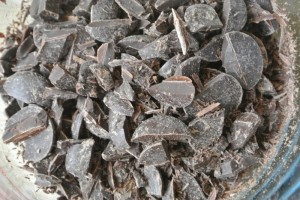
Once the chocolate is nearly all melted start testing the temperature. The melted chocolate needs to be heated to 48°c for dark chocolate (white and milk chocolate to 43°c) it will be fluid and nice and shiny.
Now to cool it down, add the remaining 1/3rd of the chocolate and start stirring. This adds good seeds of stable crystals that mix with the melted chocolate and encourage it to form the right structure as it cools.
Test the temperature with the thermometer – you need to cool it to 32°c for dark chocolate (30°c for white and milk).
It may happen quite quickly and the seed chocolate hasn’t all melted completely. If that’s the case remove the chunks with a slotted spoon – if you wait until they’ve melted in then the chocolate will have cooled to far.
Keep stirring until the chocolate drops to the right temperature. The stirring helps the process along the and the chocolate will be thicker with a more satiny look.
Now your chocolate is ready to go and should be in temper. Test a smear on a piece of baking paper to check that it sets off quickly without any swirly oily or streaky appearance.
You need to keep it at the right temperature too, between 30-32°c for dark chocolate and 29-30°c for milk and white – a tea towel wrapped around the base of the bowl helps, if it’s going in a piping bag the heat from holding in your hand should be just enough to keep warm, keep it out of a draught, microwave a damp dishcloth very briefly to set the bowl onto and if needs be give it a short session in the microwave on half power to stop the temp from dropping too low. In all honesty I’ve generally found wrapped in a tea towel is just enough.
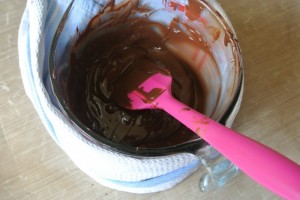
What you do with it is up to you – squiggle it on baking paper to make chocolate decorations, make chocolate lollies, use it in a mould or use it for covering chocolate lollies!
Dark Chocolate – Melt to 48°c, seed and cool to 32°c. Maintain working temp at 30-32°c.
Milk and White Chocolate – Melt to 43°c, seed and cool to 30°c. Maintain working temp at 29-30°c.
Some points to remember:
- Use a digital thermometer, a jam or candy thermometer isn’t up to the job as the markings aren’t in 1 degree increments.
- Different sources will give you different temperatures for each stage, having tested lots these are the ones that have been working for me.
- You can’t temper a chocolate with additives (some choc chips have ingredients added to keep them together in baking e.g choc chips in a chocolate chip cookie). Look for a tempered chocolate to begin with – it should be shiny and hard without any sign of streaks or bloom.
- Working in extremes of temperature is also going to make it a difficult job – don’t wait for the hottest day of the year and then decide you need to learn to temper right there and then 😉
- Like anything tempering needs a bit of practice until you get a feel for it and remember if it doesn’t temper correctly you can easily melt it and start again, you’ve nothing to lose.
- If you are setting chocolate against something – eg. The back of chocolate lollies on baking paper then they won’t be shiny on the reverse side as the baking paper is not entirely smooth. Chocolate has to be set against something shiny to be glossy on the reverse side. Chocolate moulds are generally designed to give a shiny smooth finish when turned out. A chocolate collar for a cake made on baking paper won’t be shiny but if you make the collar on a strip of shiny plastic – acetate or sticky back plastic then you will get a super shine. The reusable non-stick liners (Bake o glide) will also give you a shiny finish.
- Getting yourself and the kitchen covered in chocolate is completely normal, least it is here!

Ruth Clemens, Baker Extraordinaire
Meet me down the aisles of The Pink Whisk Shop – for all sorts of cake decorating and baking delights!


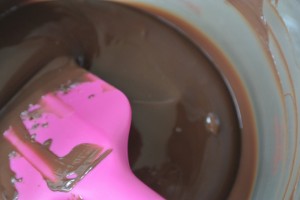
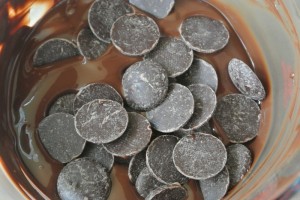

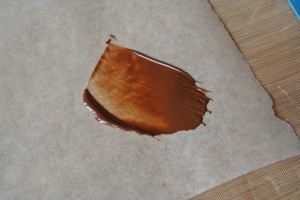
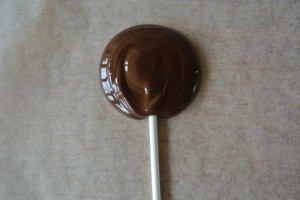





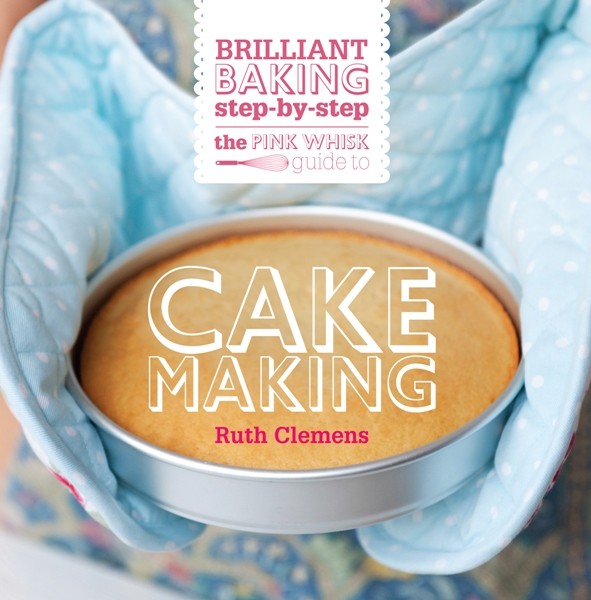
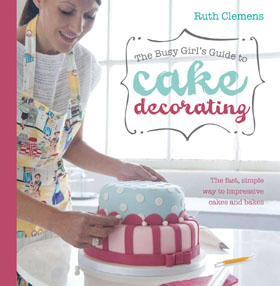





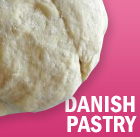
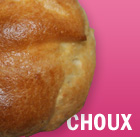
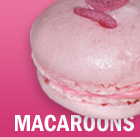

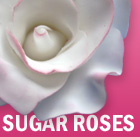

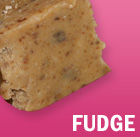

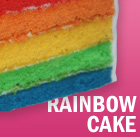
Pingback: Day 2 – Christmas Pudding Chocolate Covered Oreos | Baking, Recipes and Tutorials - The Pink Whisk